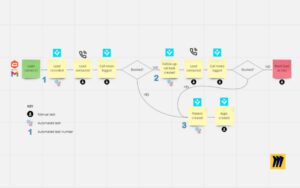The Personal Development Blog

Building a Bulletproof Morning Agenda Like a CEO
Successful CEOs don’t wake up and “see how it goes.” They start with structure, clarity, and action. Their mornings are built on focus, not fluke.
If you want to own your day instead of chasing it, you need a bulletproof planning system — one that sets your goals, blocks distractions, and sharpens your leadership edge before 9:00 AM.
This blog delivers the exact morning strategy guide used by high performers to achieve daily planning success. You’ll learn how to build a morning agenda that doesn’t just keep you busy — it drives results.
What Makes Morning Planning “Bulletproof”?
A good plan organises your day. A bulletproof plan removes guesswork, reduces friction, and creates focus under pressure.
Here’s what sets bulletproof planning apart:
- Prevents decision fatigue
- Protects high-value time blocks
- Filters out low-impact tasks
- Aligns short-term actions with long-term vision
- Turns intention into execution
It’s not about cramming in more — it’s about doing what matters first.
Why CEOs Rely on Structured Morning Planning
Top leaders face high volumes of input and demand. Without structure, they react. With structure, they lead.
Benefits You’ll Notice Immediately:
- Clear priorities before chaos begins
- More focus and fewer interruptions
- Faster execution on mission-critical tasks
- Better delegation and calendar control
- Reduced stress through pre-made decisions
Every successful CEO has a system for morning focus — and it’s never random.
The CEO Morning Agenda Formula
You don’t need fancy tools or long rituals. You need a clear 30-minute routine built around momentum.
Here’s a proven structure:
1. Start With Stillness (2–5 minutes)
- Avoid screens
- Take deep breaths
- Sit in silence or stretch
- Mentally prepare for the day
Why it works: Calms the mind before inputs hijack your focus.
2. Review Your Vision (2–3 minutes)
- Glance at your quarterly goals
- Recall your “why” for key projects
- Connect today’s tasks to long-term wins
Why it works: Reinforces purpose behind your effort.
3. Write Your Top 3 Priorities (5 minutes)

- What 3 outcomes will move the needle today?
- Avoid vague actions — write clear, defined goals
Example: “Send proposal to client by 11:00 AM” (not “Work on proposal”)
Why it works: Limits overwhelm and clarifies direction.
4. Time-Block Your Calendar (10 minutes)
- Assign tasks to real time slots
- Block deep work sessions before midday
- Leave space for breaks and review
Why it works: Turns to-dos into action — and eliminates multitasking.
5. Confirm Meetings & Prep (5 minutes)
- Review scheduled calls or appointments
- Prepare one sentence of intent for each
“Lead with clarity” | “Ask two key questions” | “Clarify next steps”
Why it works: Keeps meetings efficient and outcome-driven.
6. Set a Focus Intention (1 minute)
- Choose a mindset word: Execute. Decide. Stay calm.
- Write it down or say it out loud
Why it works: Anchors your emotional tone before distractions begin.
Sample CEO-Style Morning Agenda
Here’s how a 30-minute morning plan looks in action:
| Time | Action |
| 6:30–6:35 AM | Hydrate + 2 minutes of deep breathing |
| 6:35–6:40 AM | Review goals and weekly vision |
| 6:40–6:45 AM | Write top 3 priorities for the day |
| 6:45–6:55 AM | Time-block calendar for focus work |
| 6:55–7:00 AM | Review meetings + prep talking points |
| 7:00 AM | Begin most important task |
Bulletproof Planning Tools CEOs Use
Great planning doesn’t rely on memory. Use tools that support focus and reduce friction.
Recommended Tools:

- Paper Planners: Full Focus Planner, Productivity Planner
- Digital Tools: Notion, Sunsama, Motion, Todoist
- Calendars: Google Calendar with colour-coded blocks
- Whiteboards or Notecards: For visual task planning and rapid prioritisation
Choose one format and build consistency. The format matters less than your follow-through.
How to Build a Morning Strategy Guide That Lasts
A morning routine is only effective if it’s repeatable. Use these tips to stay on track:
1. Keep It Visible
Post your planning steps somewhere you’ll see them — inside your journal, on a whiteboard, or in your digital dashboard.
2. Protect the First 30 Minutes
No meetings, emails, or calls. This is your thinking time.
3. Start Small, Then Expand
Even a 10-minute version works. Build up as it becomes habit.
4. Review Weekly
Check what’s working. What consistently gets skipped? Adjust accordingly.
5. Reset Monthly
Realign with goals and refocus your planning rhythm.
What Makes a Morning Plan “Fail-Proof”?
Even strong plans fall apart if they lack flexibility and self-awareness. Here’s how to make your strategy stick:
Be specific
“Work on deck” = vague. “Draft 3 slides before lunch” = bulletproof.
Leave room for shifts
Plans will bend. Keep one open block daily for what overflows or moves.
Link tasks to goals
Every task should support a project, a metric, or a bigger win.
Don’t plan only in tasks — include your mindset
Strategy is doing the right thing with the right energy.
How This Leads to Daily Planning Success
Planning your day in the morning unlocks more than focus — it builds strategic momentum.
Benefits CEOs Report:
- Greater control over their calendar
- Fewer reactive choices and time traps
- Faster progress on goals that matter
- More mental energy for critical decisions
- Increased team clarity through better prep
This is how leaders create more impact without burning out.
Morning vs. Evening Planning — What’s Best?

Both have benefits, but here’s how to use them strategically:
Morning Planning:
- Best for fast start and high-energy execution
- Supports a clear reset after sleep
- Builds mental discipline and focus
Evening Planning:
- Helps you disconnect with clarity
- Allows for deeper review and recap
- Primes your subconscious for next-day solutions
Pro tip: Review at night. Refine and relaunch in the morning.
Habits That Strengthen a Bulletproof Morning Agenda
A strong plan is powered by strong habits.
Pair Your Planning With:
- A glass of water and 2 minutes of movement
- A short journaling prompt: What would make today great?
- Reviewing one long-term goal or metric
- Tracking the consistency of your planning streak
- A 5-minute silent pause before work begins
These mini habits amplify the impact of your morning plan.
Pitfalls to Avoid in Morning Planning
Even with the best intentions, mistakes can weaken your system.
Overloading your to-do list
You don’t need 12 tasks. You need 3 that matter.
Planning without calendar follow-through
If it’s not in your schedule, it’s unlikely to happen.
Starting with email or Slack
Don’t hand over your morning focus to someone else’s agenda.
Forgetting to review yesterday
Each morning should reflect what worked — and what didn’t.
Bulletproof Planning for Leaders Under Pressure
When days feel chaotic, structure saves energy.
During High-Stress Periods:
- Shrink your morning agenda to just 1 task
- Write a single sentence for focus: “Today, I stay centred.”
- Prioritise calm over speed
- Use 5-minute re-planning checkpoints midday
Even when things shift, your planning habit keeps you grounded.
Start Strong. Finish Stronger.
A bulletproof morning agenda isn’t about writing more tasks — it’s about building a system that supports clear thinking, focused execution, and flexible leadership.
When you follow a structured morning strategy guide, you lead your day — instead of chasing it.
Start with 30 quiet minutes. Protect your focus. List what matters. Schedule it. Stick to it.
That’s how you achieve daily planning success — one morning at a time.









